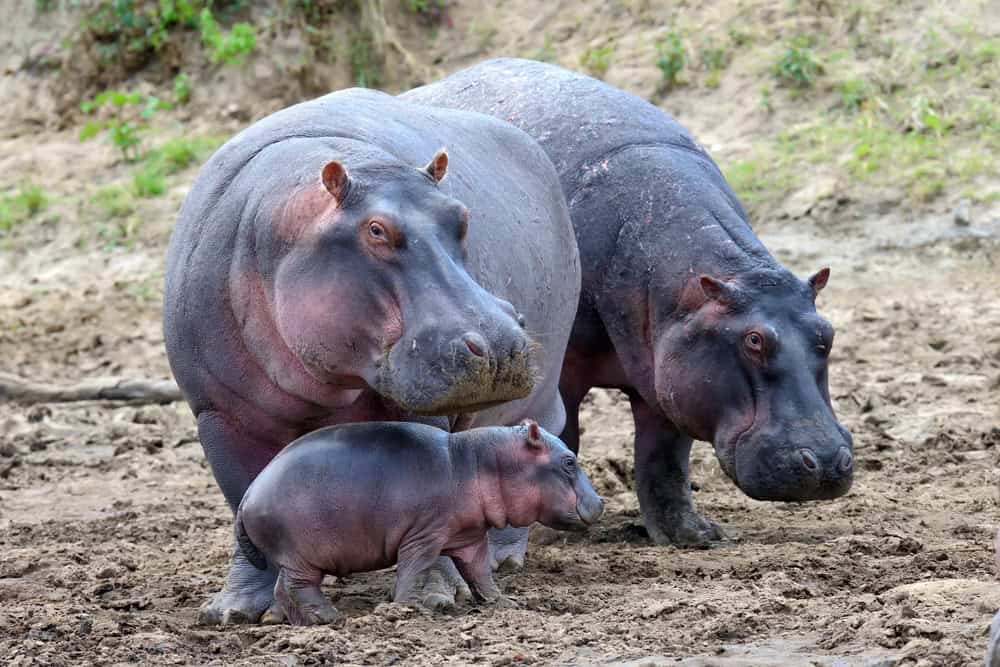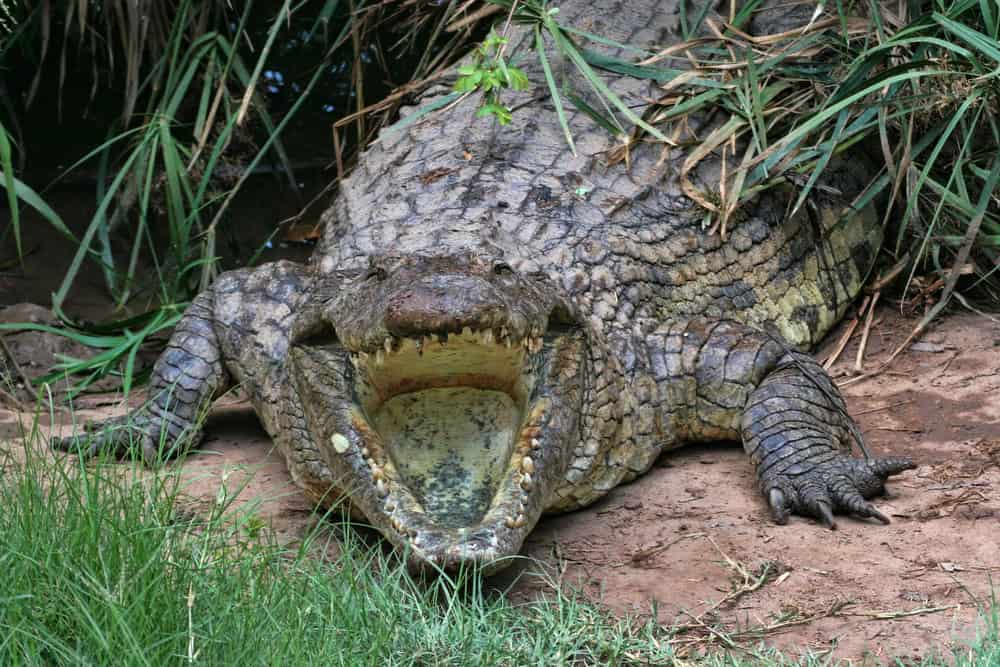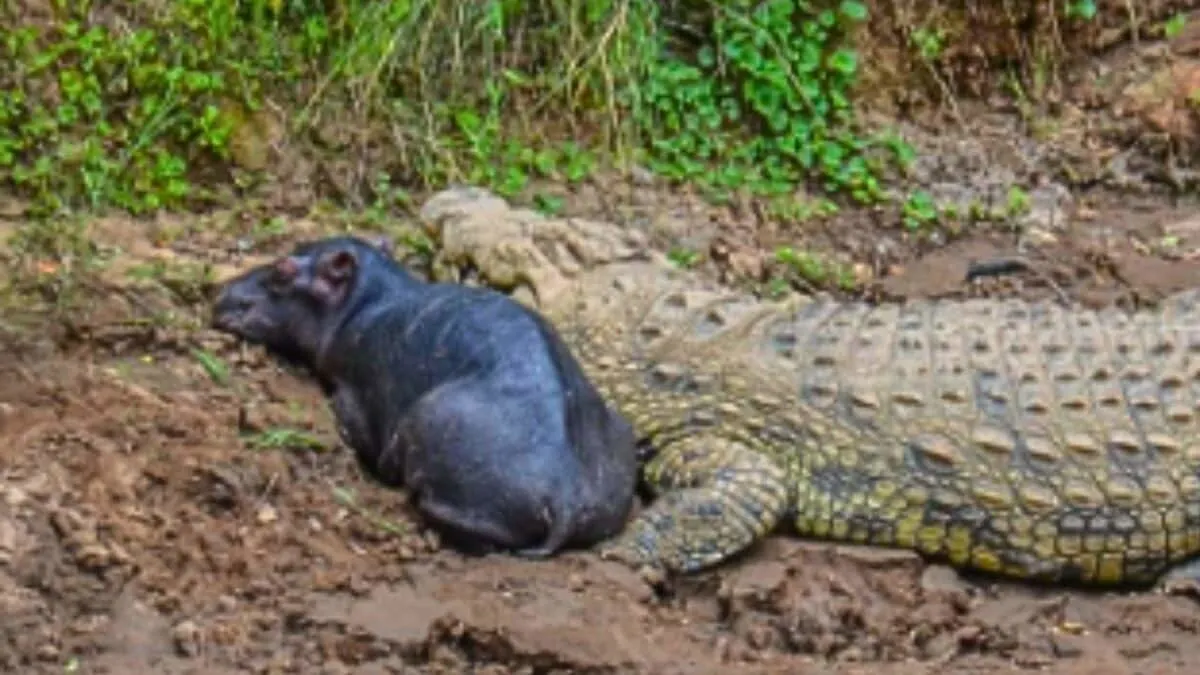In the heart of the African wilderness, where the unpredictable dance of nature unfolds, a true story left onlookers spellbound. This tale, a testament to the unexpected relationships that can form in the wild, revolves around this baby hippo that plays with a massive crocodile.

An Unlikely Friendship

On the shores of Kenya’s Mara River, a scene that defied the usual norms of nature played out. A baby hippo, driven by curiosity, approached a daunting 12-foot crocodile. Those watching feared the worst, given crocodiles’ predatory nature and a young hippo’s vulnerability. But the character had a different story to tell.
Hippos, known for their aggressive nature, are often left undisturbed by other inhabitants of the African rivers. Adult hippos are a formidable force with their massive size and mighty tusks. However, baby hippos, without the protection of their mothers, can be easy prey for predators like crocodiles.
A Dance of Trust

As the baby hippo curiously explored the crocodile, it seemed to display an innocence akin to a toddler. Basking in the sun, the crocodile remained still, allowing the young hippo to inspect it. In a heartwarming turn of events, the baby hippo, seemingly content, lay beside the crocodile, snuggling into its embrace. The scene was a poignant reminder of the unexpected bonds that can form even in the wild.
Nature’s Lessons

This unique interaction between the baby hippo and the crocodile is a lesson in peaceful coexistence. In a world rife with polarization, the story of the little hippo and the crocodile teaches us the value of curiosity, letting go of assumptions, remaining calm, and trusting positive outcomes. Nature, in its infinite wisdom, often holds the answers we seek.
Another Captivating Encounter

For those intrigued by such unexpected interactions in the wild, this footage showcases another mesmerizing encounter. It’s a testament to the endless tales of wonder that nature has in store, continually leaving us in awe.
Crocodiles and Hippos: Territorial Coexistence

Crocodiles and hippos often share the same habitats, such as rivers and lakes in Africa. Despite being formidable predators, crocodiles usually avoid confrontations with hippos due to the latter’s size and aggression. The territorial nature of hippos ensures they dominate these waters, while crocodiles steer clear, maintaining a cautious coexistence to avoid conflict.
Mutual Respect and Avoidance

Both crocodiles and hippos display a mutual respect and avoidance strategy. Hippos are highly territorial and will aggressively defend their space against intruders, including crocodiles. Crocodiles, recognizing the hippo’s strength, tend to keep a respectful distance, ensuring peaceful interactions. This dynamic minimizes direct confrontations, allowing both species to thrive in the same environment.
Occasional Conflicts

Despite their general avoidance of each other, occasional conflicts do arise. These skirmishes are typically triggered when a crocodile ventures too close to a hippo’s territory or calves. In such instances, the hippo’s aggression is evident, often resulting in the crocodile retreating. These conflicts highlight the delicate balance of power in shared habitats.
Hippo Behavior: Territorial Dominance

Hippos are highly territorial animals, especially in water. Males establish and defend territories, marking them with dung. Their aggressive nature ensures they dominate these areas, deterring other animals, including crocodiles. This territorial behavior is crucial for maintaining social structure and access to resources, such as prime grazing and resting spots.
Hippo Social Structure

Hippos live in groups called pods, led by a dominant male. These pods can include up to 30 individuals, primarily females and their young. The social structure is relatively stable, with established hierarchies. This organization helps in managing resources and protection from predators, ensuring the pod’s overall well-being.
Hippo Communication

Hippos communicate through a variety of vocalizations, including grunts, bellows, and wheezes. These sounds serve multiple purposes, such as establishing territory, signaling distress, or maintaining social bonds within the pod. Vocal communication is vital for coordinating group activities and ensuring the safety and cohesion of the pod members.
Crocodile Behavior: Hunting Techniques

Crocodiles are apex predators, known for their stealth and ambush hunting techniques. They rely on their powerful jaws and sharp teeth to capture prey, often lying in wait near water’s edge. Crocodiles use their strong tails to propel themselves swiftly, ensuring a successful catch. Their hunting strategies make them formidable predators in their ecosystems.
Crocodile Nesting and Parenting

Female crocodiles are attentive parents, carefully choosing nesting sites and guarding their eggs. After laying eggs, they cover them with vegetation to maintain the necessary temperature. Once the eggs hatch, the mother assists the young in reaching the water, providing protection during their vulnerable early stages. This parental care enhances the survival rate of the offspring.
In Conclusion

In conclusion, the Wild is a theater of stories where every moment can bring a new surprise. From the heartwarming bond between a baby hippo and a crocodile to other captivating encounters, nature continually unveils its unpredictable and beautiful side.
Next Up:
Join our Forum for free today!

- Baby Hippo Plays With Crocodile — a True Story - June 30, 2024
- Angry Ram Takes On Massive 6-Ton Digger - June 30, 2024
- The Hyena Whisperer Who Tickles Hyenas - June 30, 2024


